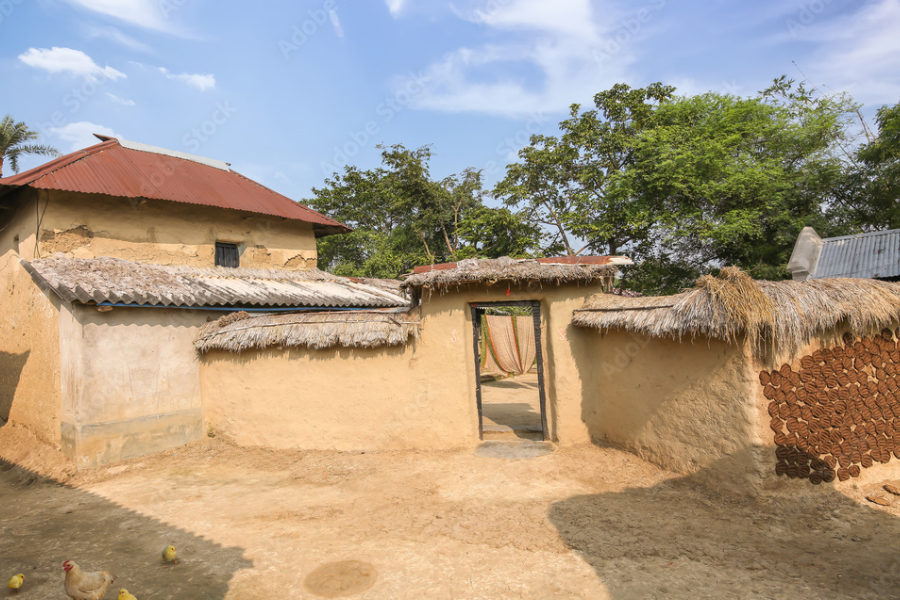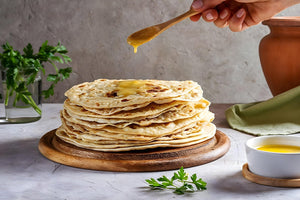
Why Cow Dung was used in Ancestral Homes?
Cow dung, a seemingly humble and humble byproduct of livestock farming, played a surprisingly significant role in the daily lives of our ancestors. While it may seem unappealing to modern sensibilities, the practice of coating floors with cow dung of Desi Indian breeds had several practical, hygienic, and even spiritual benefits. Let's delve into the reasons behind this age-old tradition and understand its relevance in historical and cultural contexts.
1. Natural Disinfectant
One of the primary reasons our ancestors used cow dung of Desi Indian breeds to coat floors was its natural disinfectant properties. Cow dung contains a variety of microbes that produce antimicrobial compounds, making it an effective agent against pathogens. This property helped keep homes and living areas clean and free from harmful bacteria and insects. In a time before modern cleaning agents and disinfectants, cow dung was a readily available and effective solution.
2. Temperature Regulation
Cow dung has excellent insulating properties. Coating floors with a mixture of cow dung and clay helped maintain a more stable indoor temperature. In hot climates, the mixture helped keep the interior cool, while in cooler regions, it provided a level of warmth. This natural form of temperature regulation was crucial for comfort, especially in regions with extreme weather conditions.
3. Dust Prevention
In many rural areas, unpaved floors could lead to a lot of dust, which was not only a nuisance but also a health hazard. Cow dung, when mixed with water and applied to floors, created a hard, smooth surface that significantly reduced the amount of dust in the home. This made the living environment cleaner and more comfortable.
4. Cost-Effective
For our ancestors, cow dung was an abundant and cost-effective material. Most households that practiced agriculture or livestock farming had easy access to cow dung. Using it for flooring was an economical way to utilize available resources without incurring additional costs for building or maintenance materials.
5. Spiritual and Cultural Significance
In many cultures, especially in rural India, cow dung of Desi Indian breeds holds spiritual significance. Cows are considered sacred, and their byproducts are often used in religious rituals and ceremonies. Coating floors with cow dung was not just a practical choice but also a way to infuse the home with a sense of purity and sanctity. The practice was believed to bring positive energy and protect the household from negative influences.
6. Pest Repellent
The antimicrobial properties of cow dung also acted as a natural pest repellent. It helped keep insects and other pests at bay, which was essential for maintaining hygiene and protecting food supplies. In areas where mosquito-borne diseases were prevalent, cow dung coatings provided a simple yet effective deterrent.
7. Environmental Benefits
Using cow dung as a building material is environmentally friendly. It is a sustainable practice that involves recycling waste products from livestock. This contrasts with modern chemical-based disinfectants and building materials that often have a significant environmental footprint. By using cow dung, our ancestors practiced a form of eco-friendly living that aligns with contemporary principles of sustainability.
Did you know about The Cow Dung House Amidst the Bhopal Gas Tragedy?
In the heart of Bhopal, amidst the bustling streets and vibrant communities, lived the Patel family in their modest cow dung-coated home. As the chilling night of December 2, 1984, descended upon the city, tragedy struck when a catastrophic gas leak from a nearby pesticide plant engulfed the streets with deadly methyl isocyanate gas. Panic spread like wildfire as families rushed to find refuge from the toxic cloud.
Amidst the chaos, the Patel family found themselves surprisingly protected. Their cow dung-coated walls and floors, a traditional choice made generations ago, proved to be a barrier against the lethal gas. While many around them struggled with the effects of the gas, the Patels were spared the worst, thanks to their ancestors' wisdom in using cow dung—a natural insulator and disinfectant—as a shield against harm. In the aftermath of the Bhopal gas tragedy, their humble home stood as a testament to the enduring value of ancient knowledge in safeguarding lives against modern disasters.
The use of cow dung to coat floors may seem unusual from a modern perspective, but it was a multifaceted practice rooted in practicality, hygiene, spirituality, and environmental sustainability. Our ancestors' resourcefulness in utilizing natural materials reflects a deep understanding of their environment and a commitment to harmonious living.




